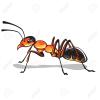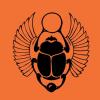hey guys. we all know its that time of year again for us here in the northeast. i recently came in possession of a Temnothorax a.k.a Acorn Ant colony. i fell in love with them immediately. Their size is small so making their formicarium and out world has presented some challenges. that being said I'm looking for tips on finding these little guys. Is it just smacking open acorns until i find some or is there a science to it? if so what am i looking for? thus far every Acorn i open has these white grubs inside of them sometime 5 or 6 at a time. i hope to become educated in the species.i know for little ants they are voracious eaters ![]() i like it.
i like it.
Thanks Guys
Diesel
Edited by Diesel, October 17 2017 - 10:40 AM.





















